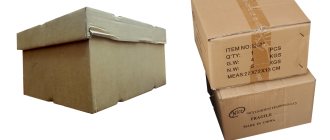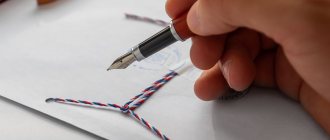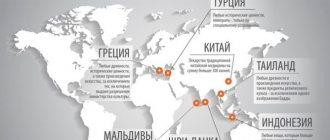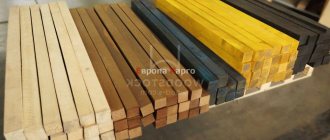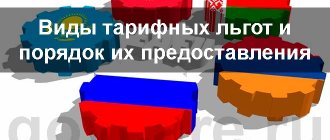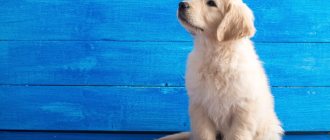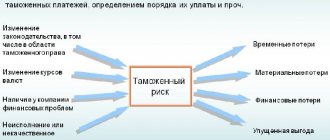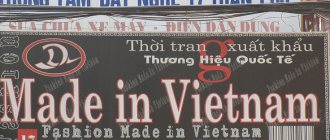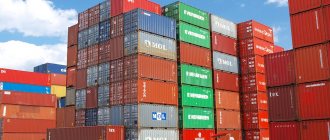List of wood types subject to registration in EGAIS Forest
Let us immediately note that wood products (for example, tables, chairs, boxes and other prefabricated structures) do not fall under the control of the EGAIS system for lumber. If you trade, buy or transport such goods, you do not have to enter data about them into EGAIS Forest.
The current classification of lumber in the Unified State Automated Information System includes types of materials with OKPD 2 codes from 02.20.11.111 to 02.20.14.190. You can find out more about them in Order No. 1047-r. For example, the code for softwood lumber for EGAIS 02.20.11.111 corresponds to the category “pine logs for sawing and planing.”
Lumber is understood as materials obtained by longitudinal sawing of logs and ridges of certain sizes and quality . They have two parallel planes.
The list of types of wood, transactions with which are subject to registration in the Unified State Automated Information System, includes pine, spruce, larch, cedar, fir and other coniferous logs intended for:
- sawing and planing;
- peeling;
- manufacturing of communication and power transmission line supports;
- production of piles of hydraulic structures and bridge elements;
- cutting on a mining rack;
- construction and laying for goods.
The list of wood subject to registration in the Unified State Automated Information System in 2021 includes pulpwood (the upper part of a tree trunk) and logs (the trunk of a fallen tree, separated from the root part and cleared of branches) from coniferous species and their mixtures (the same spruce, pine, fir and others). This also includes timber for use in round form.
Hardwood lumber is also subject to registration in EGAIS. Including logs intended for:
- sawing and planing;
- production of peeled veneer;
- making matches;
- construction and laying for goods.
Other types of wood subject to registration in the Unified State Automated Information System:
- hardwood pulpwood;
- firewood from coniferous, deciduous and other species (including mixed ones);
- firewood sawn into logs (all types);
- fuel wood.
The Order also provides a list of types of wood, according to HS codes. Let's give some examples in the table.
| HS codes | Types of wood materials |
| 4401 10 000 1 | Fuel logs up to 1 m long or split and logs |
| 4403 | Raw timber, with or without bark or sapwood, unedged or roughly edged |
| 4403 10 000 3 | Rough timber of ash, with or without bark or sapwood, unedged or roughly edged |
More details can be found in the current Order. Please note that HS codes can be short or full: short corresponds to a broad group of products, full is assigned to a separate category with certain (narrow) characteristics.
HS codes
4407 - Timber sawn or chipped lengthwise, sliced or peeled, whether or not planed, sanded or end-jointed, of a thickness exceeding 6 mm:
| 4407 | Timber sawn or split lengthwise, sliced or peeled, planed or unplaned, sanded or unsanded, with or without end joints, of a thickness exceeding 6 mm: |
| 4407 10 | - conifers: |
| 4407 10 150 0 | - - polished; having end connections, whether or not planed, ground or unsanded |
| - - other: | |
| - - - planed: | |
| 4407 10 310 0 | — — — — common spruce “Picea abies Karst.” or European white fir (Abies alba Mill.) |
| 4407 10 330 0 | — — — — Scots pine “Picea sylvestris L.” |
| 4407 10 380 0 | — — — — others |
| - - - others: | |
| 4407 10 910 0 | — — — — common spruce “Picea abies Karst.” or European white fir (Abies alba Mill.) |
| 4407 10 930 0 | — — — — Scots pine “Pinus sylveL.” |
| 4407 10 980 0 | - - - - others |
| - from tropical wood specified in note 1 to the subheadings of this group: | |
| 4407 21 | — — mahogany tree (Swietenia spp.) |
| 4407 21 150 0 | - - - polished; having end connections, planed or unplaned, ground or unpolished |
| - - - other: | |
| 4407 21 300 0 | — — — — planed |
| 4407 21 900 0 | — — — — others |
| 4407 22 | — — virola suriname, porous phoebe and balsa |
| 4407 22 150 0 | - - - polished; having end connections, planed or unplaned, ground or unpolished |
| - - - other: | |
| 4407 22 300 0 | — — — — planed |
| 4407 22 900 0 | — — — — others |
| 4407 25 | - - Shorey with dark red wood, Shoya with pale red wood and Shoya Bakau: |
| 4407 25 100 0 | - - - having end connections, whether or not planed, ground or unsanded |
| - - - other: | |
| 4407 25 300 0 | — — — — planed |
| 4407 25 900 0 | - - - - others |
| 4407 27 | — — entatndrophragm cylindrical |
| 4407 27 100 0 | — — — ground, with end connections, planed or unplaned, ground or unsanded |
| - - - other: | |
| 4407 27 300 0 | — — — — planed |
| 4407 27 900 0 | — — — — others |
| 4407 28 | - - high chlorophora, or African teak wood |
| 4407 28 100 0 | — — — ground, with end connections, planed or unplaned, ground or unsanded |
| - - - other: | |
| 4407 28 300 0 | — — — — planed |
| 4407 28 900 0 | — — — — others |
| 4407 29 | - - other: |
| 4407 29 100 0 | - - - having end connections, whether or not planed, ground or unsanded |
| - - - other: | |
| — — — — Dipterygoid, Warburg's gonistylus, aromatic dryabalanops, or camphor tree, teak, or jat tree, jongkong, Baker's intsia, thin-ribbed diera, coompassia, Cline's aucumea, hard-resinous triplochiton, entandrophragma cylindrical, entandrophragma useful, kaya ivoensis, mimuzops Haeckel, Chloophora tall, Entandrophragma Angolan, Mansonia tall, or African teak, Ilomba, or Pycnanthus Angolanese, Lovoa (species), Terminalia lush, Rosewood Rio, Rosewood Para and Brazilian rosewood: | |
| — — — — — planed: | |
| 4407 29 200 0 | — — — — — — Rio rosewood, Paa rosewood and Brazilian rosewood |
| 4407 29 250 0 | — — — — — — others |
| 4407 29 450 0 | — — — — — polished |
| — — — — — others: | |
| 4407 29 610 0 | — — — — — — winged lophyra |
| 4407 29 680 0 | — — — — — — others |
| — — — — other: | |
| 4407 29 830 0 | — — — — — planed |
| 4407 29 850 0 | — — — — — polished |
| 4407 29 950 0 | — — — — — others |
| - others: | |
| 4407 91 | - - from oak (Quercus spp.): |
| 4407 91 150 0 | - - - polished; having end connections, whether or not planed, ground or unsanded |
| - - - others: | |
| - - - - planed: | |
| 4407 91 310 0 | — — — — — bars, strips and frieze for parquet or wooden floor coverings, unassembled |
| 4407 91 390 0 | - - - - - others |
| 4407 91 900 0 | - - - - others |
| 4407 92 000 0 | - - from beech (Fagus spp.) |
| 4407 93 000 0 | - - from maple (Acer spp.) |
| 4407 93 100 0 | - - - planed, end-jointed, whether or not planed, ground or unsanded |
| - - - others: | |
| 4407 93 500 0 | — — — — polished |
| 4407 93 900 0 | - - - - others |
| 4407 94 000 0 | - - from cherries (Prunus spp.) |
| 4407 94 100 0 | - - - planed, end-jointed, whether or not planed, ground or unsanded |
| - - - others: | |
| 4407 94 500 0 | — — — — polished |
| 4407 94 900 0 | - - - - others |
| 4407 95 000 0 | - - from ash (Fraxinus spp.) |
| 4407 95 100 0 | - - - planed, end-jointed, whether or not planed, ground or unsanded |
| - - - others: | |
| 4407 95 500 0 | — — — — polished |
| 4407 95 900 0 | - - - - others |
| 4407 99 | - - other: |
| 4407 99 200 0 | - - - having end connections, whether or not planed, ground or unsanded |
| - - - others: | |
| 4407 99 250 0 | - - - - planed |
| 4407 99 400 0 | — — — — polished |
| - - - - others: | |
| 4407 99 910 0 | — — — — — from poplar |
| 4407 99 960 0 | — — — — — from tropical wood |
| 4407 99 980 0 | - - - - - others |
| 4407 99 980 1 | — — — — — — timber sawn lengthwise from birch and aspen |
| 4407 99 980 9 | - - - - - - others |
With certain exceptions, this heading covers all types of wood and timber of any length but having a thickness of more than 6 mm, sawn or chipped in the direction of the grain of the wood or obtained by planing or peeling.
These types of wood and timber products include: beams, planks, sheets, boards, slats, etc., as well as products that are considered equivalent to sawn wood materials or timber obtained by processing on edge trimming machines and having very precise dimensions, such processing provides a higher quality surface than sawing and makes subsequent trimming unnecessary. The same heading includes sheets of planed or peeled wood, as well as strips and friezes for parquet flooring, except those which have been profiled along the sides, ends or planes (heading 44.09). It should be noted that the wood products classified in this heading need not have a rectangular (including square) cross-section or a uniform cross-section along the entire length of the product.
Products of this heading may be hewn (regardless of whether the corners formed by two adjacent edges are rounded), ground or joined at the ends, for example, into a tenon (see the general provisions of the explanatory notes to this group).
This heading does not include:
(a) Wood rough cut into four edges, for example rough sawn (heading 44.03).
(b) Wood chips and similar products (heading 44.04).
(c) Sheets of veneer and plywood (and other wood-based materials not elsewhere specified), the thickness of which does not exceed 6 mm (heading 44.08).
(d) Wooden materials with one of the sides, ends or planes shaped (heading 44.09).
(e) Strips (slats) of plywood or veneer for parquet flooring (heading 4412).
(e) Joinery and carpentry structures (heading 44.18).
Explanations for subheadings
For the definition of the terms “sawn lengthwise or split” and “planed or peeled”, see the HS Explanatory Note to heading 4408, second and third paragraphs.
4407 10 310 0 — 4407 10 380 0
These subheadings do not include:
A. "imprecisely" processed timber, that is, timber which has been planed in order to remove growths and some rough saw marks (subheadings 4407 10 910 0 - 4407 10 980 0);
b. lengthwise sawn timber which, taking into account the characteristics of the wood and the state of processing technology, does not show any sawing marks, provided that the absence of saw marks is the result of a process inherent in such sawing, which is necessary for technical reasons and is not intended to facilitate
the next use of wood after eliminating these traces (subheadings 4407 10 910 0 - 4407 10 980 0).
4407 10 910 0 — 4407 10 980 0
These subheadings do not include complete sets of boards made of sawn, planed or peeled wood with a thickness of more than 6 mm, intended for the manufacture of box containers or laths. Such sets of boards fall in heading 44.15, whether they have additional fittings such as corners or bottom fixings or not. See also the HS Explanatory Note to heading 4415.
4407 24 150 0 — 4407 29 950 0
See also the general provisions of the HS explanations to this group on the names of some tropical tree species. See also the Appendix to the HS Explanations to this group.
4407 99 960 0
The term “tropical wood” in this subheading refers only to species not listed in Note 1 to the subheadings of this group.
This subheading includes the following tropical wood species: aiele, alone, andoung, bilinga, bomanga, bubinga, ebene, ebiara, faro, kapokier, limbali, longhi, movingui, mutenye, naga, niove, tali, tchitola, wenge and zingana.
Explanations from representatives of EGAIS Forest
On the official website of EGAIS Forest, explanations are given for the classification of lumber:
“The presented types of materials include sawmill products, which are obtained as a result of longitudinal division of logs and longitudinal-transverse “grinding” of their parts.
Size requirements have been established - at least 6 mm thick . In terms of quality, there must be at least two parallel planes.”
The EGAIS Forest system records the shipment of dry lumber (with moisture content up to 22%) and raw lumber (over 22%). The Order also refers to the following types of wood:
- edged;
- planed;
- treated with antiseptics and other preparations (for example, creosote) to preserve wood (preserve its properties, prevent destruction), painted;
- timber (thickness and width are more than 10 cm);
- block (with a thickness of no more than 10 cm and a width not exceeding double the thickness);
- board (less than 10 cm thick, more than double the thickness).
One example : wooden sleepers for railways. It can be unedged or trimmed. Bars ― are used for the manufacture of supports for railroad switches.
Customs payments and VAT payment
When exporting edged cedar boards, you will not pay the VAT rate to the budget. The price for the client is 20% VAT.
VAT rate: 0%
Export payments: 0%
Excise tax: 0%
Payment for export Edged boards cedar from Russia 0%
When exporting, you can also apply for a VAT refund. To do this, when selling edged cedar boards, it is necessary to prepare a set of all necessary documents. We can help sell your products in the countries of the Customs Union and APEC
When importing (importing) into another country, you will need to pay a tax, similar to VAT. Let's say in the EU this is VAT. IMPORT VAT: 20%
Which lumber does not need to be registered in EGAIS Forest
Let's consider which lumber does not fall under the Unified State Automated Information System in 2021:
- profiled;
- unprocessed (for example, logs);
- carpentry (building parts and assembly elements made of wood);
- prefabricated wooden structures (for example, furniture);
- plywood (composite material made from natural wood);
- particle board (chipboard) - a composite material in the form of a sheet made by hot pressing of wood particles, mainly shavings, mixed with a binder of non-mineral origin);
- wooden containers (boxes, cartons, etc.);
- wood flour, shavings, wood chips.
Profiled lumber is a high-tech building material, made in most cases from softwood. It differs from laminated veneer lumber in that the entire structure inside the tree is not damaged. Profiled solid timber “breathes” and is considered more environmentally friendly.
However, unlike laminated veneer lumber, profiled lumber is subject to greater shrinkage, deformation and cracking. Unfortunately, the state does not specifically define which materials are classified as profiled. The identity of the wood is determined by its characteristic features.
As for the painted material and treated with antiseptics, it also falls into the list of wood that is not subject to registration in the Unified State Automated Information System (despite the fact that it is included in the list of those subject to registration). It's all about the degree of coloring and processing.
